Long-Term Effects of Brain Aneurysms Explained
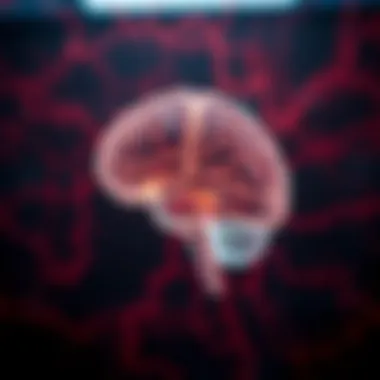
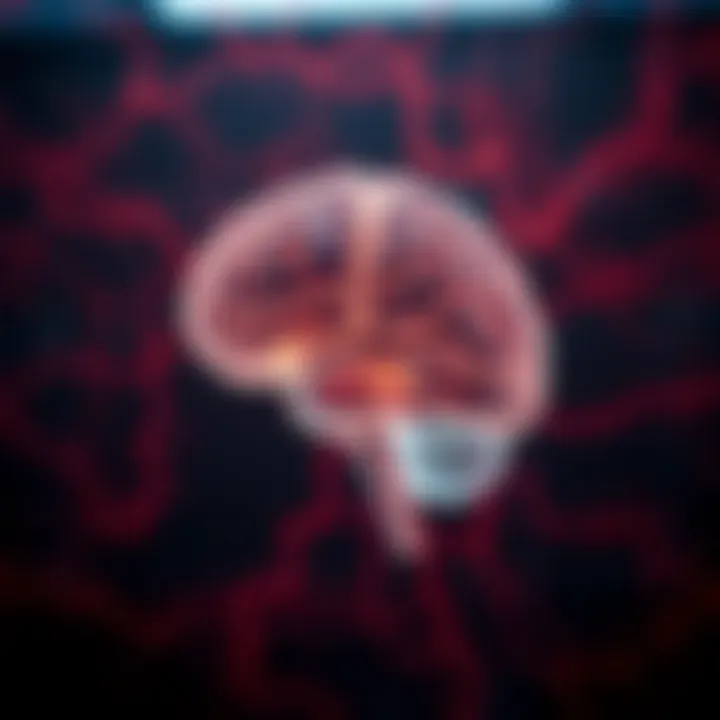
Intro
Brain aneurysms represent a serious health concern, often leading to significant complications that extend far beyond the immediate threat of rupture. Understanding their long-term effects is crucial not only for patients and their families but also for healthcare professionals. As we delve deeper into the nuances of this topic, we will examine how individuals' physical, cognitive, and emotional health can be affected in the years following both diagnosis and treatment of brain aneurysms. Through a careful exploration of statistics and rehabilitation strategies, we aim to create a comprehensive overview that sheds light on the implications for quality of life after experiencing a brain aneurysm.
Research Overview
Summary of Key Findings
Research in this domain reveals that individuals who suffer from a brain aneurysm may face a myriad of challenges post-treatment. Key findings include a notable percentage of patients experiencing cognitive deficits, emotional disturbances, and physical impairments. Reports indicate that approximately 30% of those treated for aneurysms may struggle with persistent headaches, affecting their daily activities significantly. Moreover, the emotional toll can be substantial, with many encountering anxiety or depression long after the event.
Methodologies Employed
The methodologies employed in studying the long-term effects of brain aneurysms often include a mix of longitudinal studies and retrospective analyses. For instance, researchers may review patient records over several years, assessing outcomes through standardized questionnaires designed to measure cognitive function and emotional well-being. Additionally, some studies incorporate neuroimaging techniques to gain insights into structural changes in the brain post-aneurysm, providing a comprehensive view of the long-term impact.
In-Depth Analysis
Detailed Examination of Results
In analyzing the results from various studies, distinct patterns emerge. Cognitive assessments typically show declines in areas like memory and processing speed. Patients often describe a feeling of mental fatigue that hampers their ability to focus or engage in complex tasks. For example, someone who managed high-pressure responsibilities prior to their aneurysm may find themselves struggling to adapt back into the same role at work, leading to potential career stagnation.
Physical outcomes, too, deserve attention. Many individuals report ongoing issues like balance difficulties or coordination problems. These symptoms, although subtle, can have profound effects on everyday life; trivial activities such as walking or lifting objects may become trials in patience and endurance.
Comparison with Previous Studies
When we juxtapose recent findings with previous research, certain trends surface. Earlier studies generally underscored immediate recovery, often overshadowing the significance of long-term care. Contemporary approaches now emphasize a holistic view, integrating mental health support into the recovery process. This shift highlights an evolution in the comprehension of how brain aneurysms affect patients – it's not merely about survival, but about improving the quality of life post-event.
"Understanding the long-term effects is vital. It's not just about treating the aneurysm, but also about holistic recovery and ongoing support."
This change in perspective advocates for better post-treatment protocols that encompass emotional and physical rehabilitation.
By assessing the metrics surrounding brain aneurysms, we build a framework that not only informs patients but empowers them as well. As this narrative unfolds, the importance of tailored rehabilitation strategies becomes clear, reinforcing the need for ongoing dialogue about brain health and recovery.
Understanding Brain Aneurysms
Understanding brain aneurysms is a crucial part of grasping the broader implications following a diagnosis and treatment. It lays the foundation for comprehending the long-term effects that individuals may experience. A brain aneurysm is defined as a bulge in the wall of a blood vessel in the brain, which, if it's severe enough, can rupture, resulting in dangerous health situations. Knowing the ins and outs of this aspect of brain health can significantly influence patient outcomes, allowing for more informed decisions about treatment and lifestyle changes.
The complexity of brain aneurysms is mirrored in their varying types and presentations, which can lead to distinct health challenges. By developing a clear understanding, individuals can better advocate for themselves and their loved ones, as well as prepare for potential aftereffects, both physical and emotional. Additionally, healthcare providers can tailor educational materials and rehabilitation processes to meet patient needs more effectively.
Furthermore, familiarity with brain aneurysms offers insight into the risk factors. This understanding not only encompasses medical history but also lifestyle choices that might influence these factors. Conversations around prevention, symptoms to watch for, and when to seek medical advice can certainly lead to improved public awareness and proactive healthcare practices.
"Knowledge is the first step toward empowerment in healthcare. When patients and families know what they are dealing with, they can better navigate the complex landscape of treatment and recovery."
In summary, understanding the nature of brain aneurysms is not merely academic; it's foundational for reducing the risk of ruptures, enhancing recovery, and ultimately improving quality of life.
Defining Brain Aneurysms
A brain aneurysm, often likened to a blister, forms when a weakened area of a blood vessel wall bulges out. This bulging can create serious complications. The medical community typically divides brain aneurysms into several categories based on their shape and location. They can appear as saccular (berry-shaped), fusiform (spindle-shaped), or even as more complex configurations. Each type has different characteristics and may require varied approaches to treatment and management.
In the context of symptoms, many individuals live with unruptured aneurysms without ever realizing they are there. When the nightmare scenario of a rupture occurs, the effects can be catastrophic, resulting in strokes, neurological impairment, or even death. For many patients and families, getting a clear definition of what they are dealing with can help demystify a frightening situation.
Types of Brain Aneurysms
- Saccular Aneurysms: These are the most common type and resemble a berry on a stem. They're usually located at the branching points of arteries in the brain. Their structure makes them more susceptible to rupture.
- Fusiform Aneurysms: These involve a widening of the entire circumference of a blood vessel. They are less common and can occur due to severe atherosclerosis or damage to the blood vessel.
- Mycotic Aneurysms: Resulting from infection, these aneurysms can appear in the setting of conditions like infective endocarditis. Their management often includes targeting the infection alongside dealing with the aneurysm itself.
Recognizing these types is fundamental for both diagnosis and treatment strategies. Health professionals can choose the suitable course of action based on the specifics of the aneurysm type, improving clinical outcomes and reducing risks associated with treatment.
For more in-depth information, you can visit MedlinePlus or similar resources.
Incidence and Risk Factors
Understanding the incidence and risk factors associated with brain aneurysms is crucial, as these elements shed light on who is most likely to be affected and why. Analyzing statistics and the underlying conditions that predispose individuals to aneurysms not only aids in risk assessment but also informs preventative strategies and treatment modalities. This section dives into the trends and patterns surrounding brain aneurysms to underscore their significance in clinical practice and public health.
Epidemiology of Brain Aneurysms
The epidemiology of brain aneurysms reveals insightful data about their occurrence within various demographics. Research indicates that the prevalence of brain aneurysms ranges between 1.5% to 5% in the general population, though many remain asymptomatic. Notably, a study conducted by the National Institute of Neurological Disorders and Stroke found that women are more likely to develop aneurysms than men, particularly in the age group of 35 to 60 years. This suggests that hormonal factors may play a role in their formation.
"Epidemiological studies show that a significant majority of ruptured aneurysms occur in individuals aged between 40 and 60, making this group particularly vulnerable."
Essentially, the statistics highlight a pressing need for targeted screening in at-risk populations, especially for those with a family history of aneurysms. Furthermore, geographical variability has been noted, with reported higher incidence in certain regions, which could be linked to genetic predisposition or environmental factors.
Identifying Risk Factors
Several risk factors have been identified that increase the likelihood of developing brain aneurysms.
- Hypertension: High blood pressure is a primary risk factor that can weaken vessel walls over time, making them more susceptible to aneurysm formation.
- Smoking: Cigarette smoke contains numerous harmful substances that can damage blood vessels, contributing significantly to the emergence of aneurysms.
- Family History: Genetics consistently come into play; individuals with relatives who have had aneurysms are at a markedly higher risk.
- Age and Gender: As noted earlier, age and gender are significant; women aged between 35 to 60 are particularly prone.
- Connective Tissue Disorders: Conditions such as Ehlers-Danlos syndrome can weaken vascular walls, posing additional risks.
It is essential to recognize these factors as they shape not only individual health outcomes but also public health initiatives aimed at education and prevention. By grasping the interplay of these risk factors, healthcare providers can better identify patients who may benefit from early screening efforts.
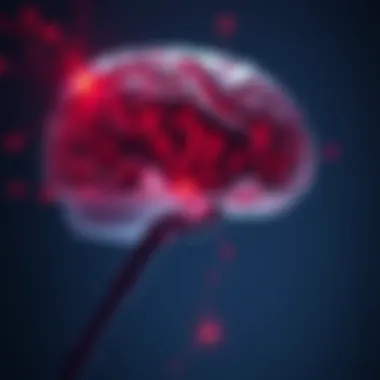
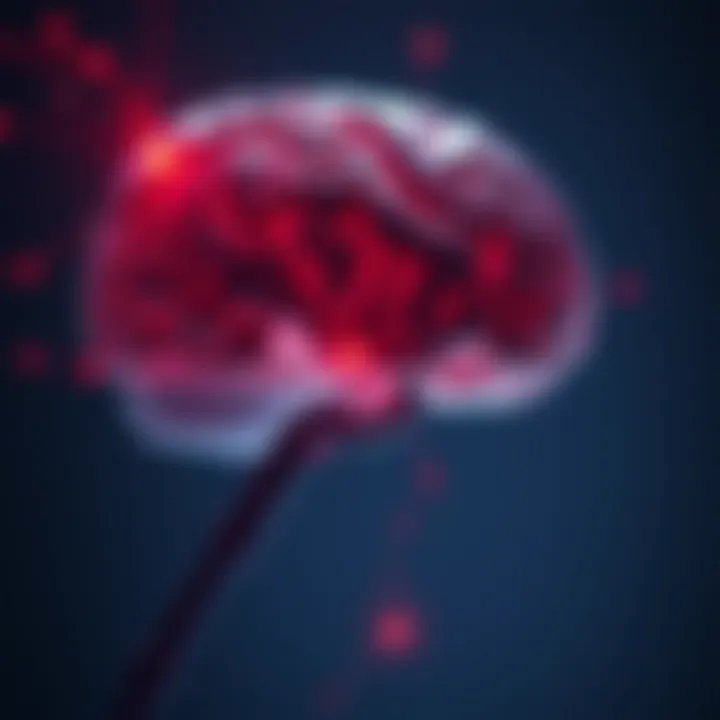
Diagnosis of Brain Aneurysms
Understanding how brain aneurysms are diagnosed is crucial for managing their risk. The process not only detects the presence of an aneurysm but also allows for immediate intervention to prevent complications, such as rupture. The quicker a diagnosis is made, the more effective treatment options can be. This section emphasizes how timely diagnosis significantly influences a patient's long-term prognosis and quality of life.
Diagnostic Tools and Technologies
When it comes to diagnosing brain aneurysms, a range of diagnostic tools and technologies are utilized. The following methods are at the forefront:
- Magnetic Resonance Imaging (MRI): This method leverages powerful magnets and radio waves to create detailed images of the brain. An MRI can reveal the size and location of an aneurysm without exposing the patient to ionizing radiation, which is a boon for individuals requiring multiple scans.
- Computed Tomography (CT) Scan: CT scans are particularly effective in emergency settings. They take cross-sectional images of the brain and can quickly indicate if there is any hemorrhage or a presence of an aneurysm.
- Angiography: This technique involves injecting a contrast dye into the blood vessels. An angiogram provides clear visuals of blood flow and can effectively outline any irregularities or aneurysms. It’s often used to obtain a detailed map of the blood vessels in the brain before treatment decisions are made.
- Ultrasound: While not common for detecting brain aneurysms themselves, ultrasound can provide valuable information about blood flow within arteries. It’s a less invasive option and often used in specific circumstances.
Utilizing these diagnostic tools, specialists assess both the potential presence and the risk associated with brain aneurysms. Each method has its own strengths, making it essential to consider the context in which the aneurysm is suspected.
"Early detection allows for timely treatment which can change the course of a patient's recovery."
Symbols of Suspected Aneurysm
Beyond technological tools, healthcare professionals often rely on symbols of suspected aneurysms when diagnosing. These symptoms can vary from mild to severe and often depend on whether the aneurysm is leaking or has ruptured. Here are some common indicators:
- Severe Headaches: Sudden, intense headaches that feel unlike any previous headache might be the first sign of complications. Patients may describe it as the worst headache of their lives.
- Vision Changes: Blurred or double vision may occur when an aneurysm presses on surrounding structures; it’s a signal that shouldn’t be ignored.
- Neurological Symptoms: Weakness on one side of the body, difficulties with speech, or changes in consciousness can indicate serious developments requiring immediate medical attention.
- Nausea and Vomiting: These symptoms may accompany headaches or may arise alone, particularly if there's pressure within the skull.
The combination of these clinical signs along with imaging results forms a comprehensive basis for diagnosing brain aneurysms. Recognizing these symbols early can prompt urgent care, significantly affecting outcomes.
For anyone involved in the field or affected by brain aneurysms, an understanding of these diagnostic processes is imperative. In the broader spectrum of managing health, knowledge connects the dots between awareness, timely intervention, and improving long-term outcomes.
Treatment Options
When dealing with brain aneurysms, the selection of an appropriate treatment option is vital. Each type of intervention comes with its own set of advantages and considerations. Understanding these options paves the way for better recovery and management of aneurysm-related challenges.
Surgical Interventions
Surgical interventions are often necessary for those with larger, more complex brain aneurysms or those posing an immediate threat of rupture. The most common surgical method is called craniotomy, where a surgeon opens the skull to access the aneurysm directly. This procedure allows the surgical team to clip the aneurysm, cutting off its blood supply and minimizing the risk of rupture.
Key aspects to consider include:
- Risks: Like any major surgery, craniotomy can lead to complications such as infections, bleeding, or neurological deficits.
- Recovery Time: Patients may experience a longer recovery time post-surgery compared to less invasive options. Typically, hospital stays range from several days to weeks, depending on the individual’s condition and response to the procedure.
- Long-Term Outcomes: Success rates can vary, but many individuals regain normal or near-normal function after a successful surgery.
The decision to go ahead with surgical interventions hinges on multiple factors including the size and location of the aneurysm, the patient’s overall health, and the potential for long-term complications. Close collaboration between the patient and the medical team is crucial.
Endovascular Procedures
On the other hand, endovascular procedures have gained traction in recent years, primarily due to their minimally invasive nature. One common approach is the placement of coils into the aneurysm through a catheter. This method promotes clotting within the aneurysm, effectively preventing blood from entering.
Some notable benefits include:
- Minimized Recovery Time: The endovascular method typically allows for a shorter hospital stay and quicker recovery compared to traditional surgery. Many patients can return home within a day or two after the procedure.
- Lower Operational Risks: As a less invasive option, endovascular procedures often come with reduced risks of surgical complications, which can greatly ease the concerns of patients and their families.
- Adaptability: This procedure is particularly useful for individuals who may not be suitable candidates for open surgery due to other health conditions.
However, endovascular options are not without challenges. Not all aneurysms can be treated this way, especially those with unusual shapes or positions. Additional follow-up imaging may be necessary to confirm that the coils are functioning as intended over time.
Successful treatment of an aneurysm hinges on understanding both the risks involved with each option and the long-term implications for health and quality of life.
For more insights into treatment options for brain aneurysms, consider checking reliable resources like Mayo Clinic or the American Heart Association.
Immediate Effects Post-Treatment
Understanding the immediate effects following the treatment of brain aneurysms is crucial in comprehending the broader implications of recovery and rehabilitation. The aftermath of an aneurysm can be a tumultuous time, characterized by a range of physical, emotional, and cognitive reactions. Patients often face various complications during this period, making awareness and preparation key. Moreover, navigating the psychological turmoil that can accompany treatment underscores the need for comprehensive support systems. Thus, delving into these immediate effects is essential to charting an effective recovery path.
Physical Health Complications
Brain aneurysm treatment, while life-saving, can also lead to a host of physical challenges. Some common health complications that arise in patients post-treatment include:
- Reduced Mobility: After surgery or endovascular procedures, many patients experience diminished strength and coordination. This can significantly hinder their ability to perform daily activities, necessitating physical rehabilitation.
- Headaches and Pain: Post-treatment headaches, sometimes referred to as "post-aneurysm headaches," can persist long after the actual intervention. These headaches might stem from various factors, including surgical trauma or the effects of medication.
- Neurological Symptoms: Depending on the aneurysm's location and the treatment method, some patients may experience lasting neurological effects. Symptoms can vary widely — from minor memory lapses to more debilitating sensory or motor deficits.
"The lord of the shadows and the shadows of the lord, bear gifts in form of pain, but they pass."
- Seizures: In some cases, patients might face new-onset seizures after treatment. These can stem from the disruption caused during the intervention, particularly if the aneurysm impacted surrounding areas of the brain.
Acknowledging these complications is critical for developing effective post-treatment care plans. Proper monitoring and tailored rehabilitation strategies can significantly enhance recovery for individuals facing these challenges.
Psychological Response to Treatment
The psychological impact of a brain aneurysm and its treatment goes hand in hand with physical recovery. For many, the experience can lead to a brewing storm of emotions, including anxiety, stress, and feelings of dread about the future. Here are several key aspects to consider regarding the psychological response:
- Anxiety and Fear: Many patients grapple with anxiety related to their recovery. Fear of recurring health issues or the unknown can be paralyzing, affecting an individual's ability to adapt to their new circumstances. This anxiety can manifest in everyday worries and impact relationships with family and friends.
- Depression: A common companion to recovery is depression, which can arise from the significant life changes incurred after treatment. Loss of independence or the emotional toll of coping with physical limitations may deepen these feelings. It’s advisable for patients to engage in mental health counseling as part of their recovery process.
- Support Networks: The presence of a good support system can make a marked difference in how individuals cope with the psychological aftermath. Whether it’s family, friends, or support groups, sharing experiences can help alleviate feelings of isolation.
- Coping Strategies: Emphasizing coping strategies, like mindfulness and mindfulness-based stress reduction techniques, can be beneficial. These methods encourage patients to stay grounded in the moment rather than becoming overwhelmed by what lies ahead.
Identifying and addressing these psychological responses plays a paramount role in holistic recovery, allowing individuals to rebuild their lives with greater resilience and confidence.
Cognitive Outcomes
When we talk about cognitive outcomes following brain aneurysms, we’re often stepping into a complex and intricate landscape. Brain aneurysms, once treated, can lead to a variety of long-term cognitive effects that can significantly alter an individual's quality of life. Understanding these cognitive outcomes is paramount, not just for medical professionals but also for patients, families, and caregivers. These effects can manifest in several specific domains, including memory, learning capacity, attention span, and executive functioning.


Specific Elements of Cognitive Impact
The cognitive aftermath of an aneurysm can present itself in various ways. For some individuals, these changes may be subtle, while for others, they can represent a substantial hurdle in their everyday life. Typically, these cognitive shifts include:
- Memory impairment: This can range from difficulties retaining new information to recalling past memories.
- Learning challenges: Those recovering may find it hard to adapt to new environments or grasp novel concepts.
- Attention deficits: Many report struggles to maintain focus, often feeling overwhelmed by multitasking or distractions.
- Diminished executive function: This refers to the decline in the capability to plan, organize, and manage tasks effectively.
Recognizing these specific aspects enables a more tailored approach to rehabilitation and support.
Benefits of Addressing Cognitive Issues
Focusing on cognitive outcomes has several benefits. Not only does it equip individuals with the tools needed to navigate their daily lives more effectively, but it can also improve their overall satisfaction and mental health. Addressing cognitive challenges through rehabilitation strategies can foster a sense of independence, allowing individuals to reclaim their daily routines.
Considerations
As we move forward with comprehensive care for individuals affected by brain aneurysms, it's crucial to give due consideration to cognitive outcomes. Factors such as the nature of the aneurysm, age at the time of occurrence, and the type of treatment received can all contribute to the cognitive landscape. Patients and caregivers should remain vigilant in monitoring any changes and seek professional guidance when needed.
"The journey post-aneurysm is not just about physical recovery; it’s equally about understanding and adapting to cognitive changes that may arise."
In the next sections, we’ll delve deeper into how brain aneurysms impact memory and learning, as well as attention and executive functioning.
Emotional and Psychological Effects
Emotional and psychological health should never be seen as an afterthought when discussing brain aneurysms. These conditions tap into a person's very essence, often morphing their sense of self and how they engage with the world around them. Following a diagnosis, individuals may find themselves on tumultuous seas, navigating waves of anxiety, depression, and other psychological challenges. It's crucial to understand that emotional reactions to a brain aneurysm are just as valid and important as the physical aspects of recovery.
The psychological impact can be profound and long-lasting. Studies have shown that a substantial proportion of survivors deal with chronic emotional distress. This distress can ripple into various facets of life, affecting relationships, work, and personal aspirations. Therefore, recognizing mental health concerns early on can pave the way for interventions that significantly improve quality of life in the long-term.
Long-Term Anxiety and Depression
In the wake of a brain aneurysm, anxiety and depression often step into the spotlight. These conditions can manifest in many forms—constant worry, changes in appetite, and persistent feelings of sadness. It’s worth noting that feelings of nervousness about a potential recurrence or concerns regarding health can become an incessant loop, draining someone's emotional reserves.
Many experience these feelings as if they’re trudging through molasses—every step feels heavy, and the future appears bleak at times.
- According to recent research, around 30-50% of aneurysm survivors may develop anxiety or depression post-treatment.
- Individuals might feel detached from their former selves, grappling with ever-changing identities.
Therefore, it's essential for healthcare providers to pay attention to these emotional aspects. Simple screening tools can aid in identifying those at high risk for these mental health issues.
"Mental health is indeed a vital aspect of overall health, yet it often gets neglected. Addressing emotional issues can expedite recovery and improve life satisfaction significantly."
Post-Traumatic Stress Disorder (PTSD)
Having a brain aneurysm is undeniably traumatic. Beyond the physical dangers, the psychological scars can also last long after the event. A subset of individuals may develop Post-Traumatic Stress Disorder, a condition that can emerge due to the distressing nature of their experience. Symptoms often appear in forms like flashbacks or severe anxiety when reminded of the event.
While many people think PTSD is limited to military experiences, it can just as easily overshadow the life of someone who has faced a serious health crisis. The aftermath can lead to:
- Hypervigilance, often keeping an individual on edge, making it difficult to relax.
- Isolation, where interaction is minimized due to fear of discussing one’s experience.
- Difficulty forming new relationships, often stemming from a fear of vulnerability.
Creating awareness around PTSD is essential, as is fostering supportive networks where survivors can feel safe to discuss their feelings. Therapy, especially cognitive behavioral therapy, can help to mitigate the symptoms, allowing individuals to regain control over their lives. Engaging in group therapy also offers a shared experience, promoting a sense of community that can be incredibly healing.
Physical Rehabilitation and Recovery
Physical rehabilitation after a brain aneurysm is paramount. It not only helps patients regain their physical abilities but also instills a sense of agency and normalcy in their lives. Recovery often unfolds over time, incorporating various therapeutic methods tailored to individual needs. These approaches can significantly improve mobility, balance, and overall physical well-being.
Role of Physical Therapy
Physical therapy plays a critical role in recovery, assisting patients to rebuild strength, regain mobility, and improve balance. After an aneurysm, many find their movements hindered, making even simple tasks seem Herculean. Through tailored exercises and guided movements, physical therapy helps retrain the body. An emphasis is placed on gradual, purposeful progress, encouraging patients to set realistic goals for themselves.
The benefits are multifold. For instance, exercises are designed to enhance endurance and flexibility, which can mitigate fatigue—a common complaint for those recovering from cranial surgeries. Therapists often introduce balance training, addressing problems that may arise from changes in physical stamina or coordination.
Moreover, the therapeutic relationship between the patient and physical therapist fosters not just physical recovery but emotional support. Being guided through a structured program can significantly reduce the feelings of isolation many face post-treatment.
Occupational Therapy Approaches
On the other hand, occupational therapy focuses on helping individuals regain the skills necessary for daily living. The approach is holistic, addressing not just physical capabilities but also cognitive and emotional dimensions of recovery. Occupational therapists collaborate with patients to develop routines that accommodate their current abilities while encouraging gradual independence.
The importance of occupational therapy cannot be overstated. For many, everyday activities such as cooking, dressing, or even interacting socially can become daunting tasks after experiencing a brain aneurysm. Therapists utilize adaptive techniques and tools designed to empower patients. These might include simple strategies like using wider grips for utensils or workarounds for managing daily schedules.
Furthermore, therapy sessions can be tailored to the interests and preferences of the person. For example:
- Home Assessments: Evaluating a patient’s living environment to identify potential hazards and suggesting modifications to improve safety.
- Skill Training: Practicing real-life scenarios such as grocery shopping or managing finances to bolster confidence.
- Cognitive Integration: Addressing memory or attention issues that may be evident after an aneurysm, ensuring that patients can safely return to work or participate in social functions.
"Rehabilitation is not merely about restoring lost skills; it’s about reclaiming one’s life."
This comprehensive approach to rehabilitation aims to smooth the transition back into one’s routine, ultimately leading to a better quality of life. It recognizes that recovery is a multifaceted journey—one that involves patience, persistence, and a supportive network of healthcare professionals. As the patient progresses, these rehabilitation efforts pave the way for not only physical recovery but enhancing a sense of belonging in social circles and community at large.
Social Interactions and Relationships
The aftermath of a brain aneurysm can significantly shift the landscape of social interactions and relationships for individuals affected. As if the ground beneath one's feet has shifted, family dynamics and friendships may face upheaval. The intricate interplay of physical, cognitive, and emotional recovery influences not just the individual, but those around them, leading to a web of experiences that is worth dissecting. Understanding these relationships is essential as it contributes to the overall narrative of healing and adaptation following such a medical event.
Impact on Family Dynamics
Families often serve as a frontline support system for anyone who has survived a brain aneurysm. However, the road is rarely smooth. As loved ones try to gain an understanding of the condition, they may also wrestle with their own fears and emotional responses. Family members might become caregivers, which can unbalance roles traditionally established within the household.
- Communication Strains: Misunderstandings can arise when an individual experiencing cognitive or emotional changes struggles to articulate their needs. For example, a survivor might find it tough to engage in discussions or express feelings, causing frustration among family members.
- Support Systems: On the flip side, family support can be a powerful anchor. Families that foster open dialogue and provide emotional comfort often navigate these changes more effectively. Active listening and group discussions about feelings and experiences can mend rifts and strengthen bonds.
- Role Reversal: Sometimes, parents become dependent on their children for support, which may offer a new perspective on relationships. Such role reversals can bring families closer but may also create stress and conflict if not handled delicately.
Recognizing these aspects within family dynamics is indispensable, as they can create an environment that either fosters recovery or impedes it. Families that engage positively generally see better outcomes, not just for the individual affected, but also for the family unit as a whole.
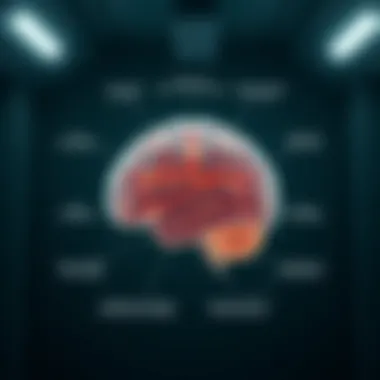
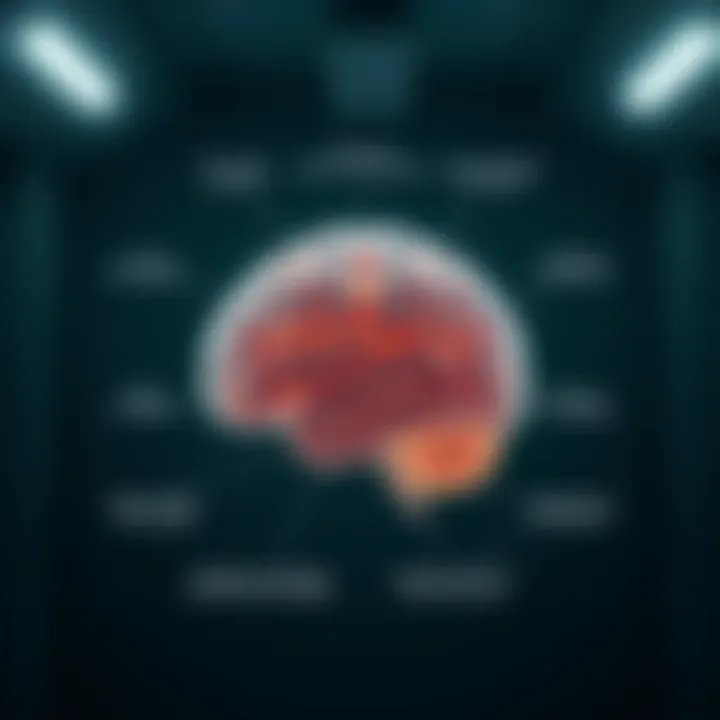
Navigating Friendships and Social Spaces
Friendship circles may also shift dramatically after a brain aneurysm. Friends might offer support, yet the individual recovering from an aneurysm may feel the weight of expectations to engage as they did before.
- Withdrawal from Social Activities: Survivors might feel uncertain about their limitations and withdraw from previously enjoyable gatherings. This withdrawal can, in turn, lead friends to feel neglected. Communication becomes vitally important; being honest can help alleviate misunderstandings.
- Redefining Connections: Some friendships may grow stronger as survivors share their experiences. Others may fade away due to a lack of understanding or empathy. This can be a time to reconsider what friendships bring to one’s life, ultimately leading to a refinement of one’s social circle.
- Coping with Social Anxiety: An increase in anxiety when entering social situations is common. It may help to engage in smaller gatherings first or seek out friends who understand and provide a comfortable atmosphere for engagement.
"The need for understanding and patience is paramount; navigating social norms becomes a journey in itself."
In summary, both family and social relationships are affected in unique ways after a brain aneurysm. The quality of these interactions can make a considerable difference in the recovery process. Understanding the nuanced impact on social dynamics may not only aid in personal recovery but also enrich the lives of those around them.
Quality of Life After an Aneurysm
The significance of evaluating the quality of life after a brain aneurysm cannot be overstated. Individuals who have experienced such a life-altering event often find themselves navigating uncharted waters, making it essential to understand how their lives have shifted. Quality of life encompasses various aspects, including physical health, emotional well-being, and social interactions. Addressing these elements not only highlights the challenges individuals may face but also allows for the identification of strategies that can assist in enhancing their overall living standard.
A brain aneurysm affects each person uniquely. Factors such as the severity of the aneurysm, the type of treatment received, and an individual’s pre-existing health conditions play a crucial role in shaping long-term outcomes. Therefore, continuously assessing quality of life opens the door for better rehabilitation efforts. It paves the way for healthcare providers to tailor recovery plans and ultimately fosters a supportive environment for recovery.
Assessing Life Quality Metrics
Evaluating quality of life necessitates a multi-faceted approach. Several critical metrics help capture the complex nature of post-aneurysm life:
- Physical Functioning: This includes assessing mobility, fatigue levels, and the ability to perform daily activities. In many cases, fatigue can be a significant barrier, impacting everything from work to hobbies.
- Emotional Well-Being: Emotional health is vital. People may experience a roller coaster of emotions, ranging from frustration and anxiety to grief. Tools like validated questionnaires can measure feelings of anxiety, depression, and stress.
- Social Engagement: Investigating how relationships change post-aneurysm is essential. This may involve examining both familial and social connections, as feelings of isolation may intensify, driving a wedge between the survivor and their loved ones.
- Quality of Sleep: Sleep often goes hand in hand with physical and emotional well-being. Disrupted sleep patterns are commonplace after a brain aneurysm, so monitoring sleep quality becomes a key aspect of assessment.
"Quality of life assessments are not merely procedural; they can provide insight into the unmet needs of survivors, guiding both medical approaches and societal support systems."
Ultimately, these metrics serve as checkpoints in the recovery journey, aiding both patients and healthcare providers in setting achievable objectives for rehabilitation.
Adaptive Strategies for Improved Living
When it comes to enhancing quality of life after a brain aneurysm, a proactive approach is vital. Adaptive strategies can significantly bridge the gap between existing challenges and improved well-being. Here are some effective methods:
- Setting Realistic Goals: Breaking down recovery into manageable milestones can help individuals not feel overwhelmed. This includes physical rehabilitation goals or emotional coping strategies. Small wins can significantly boost motivation.
- Joining Support Groups: Engaging with others who have faced similar experiences can be incredibly therapeutic. Sharing stories and coping strategies within a supportive community helps diminish feelings of isolation and encourages healing.
- Mindfulness and Stress Reduction: Practices like yoga, meditation, or simple breathing exercises can alleviate anxiety and foster emotional resilience. Focusing on the present can be grounding, especially during moments of unease.
- Physical Activity as Therapy: Adapting exercise routines to fit individual capacities can help restore physical function and reduce stress. It is essential to consult with healthcare professionals to craft a suitable plan.
- Utilizing Technology: Understanding how to use apps or devices for mindfulness or physical activity tracking can enhance engagement in recovery. Technology can be an ally, simplifying daily tasks and wellness monitoring.
A brain aneurysm can change the course of a life, but with the right strategies and support, individuals can carve out a fulfilling and meaningful existence. By focusing on quality of life, those affected can better navigate their post-aneurysm journey.
Research Trends and Findings
Research in the area of brain aneurysms is vital for not only developing better treatments but also enhancing the overall understanding of long-term outcomes. This section sheds light on current studies focusing on the lasting effects of brain aneurysms and highlights innovative therapeutic approaches that are emerging in the field.
It’s crucial to note that understanding the long-term effects post-treatment can significantly influence recovery protocols and patient care strategies. With a nod to both physical and psychological ramifications, ongoing research is designed to bridge gaps in knowledge, providing insights that can shape future clinical practices and improve lives.
Current Studies on Long-Term Effects
Current studies are investigating a variety of impacts brain aneurysms can have on survivors long after initial treatment. Researchers are looking at the links between aneurysm treatment and chronic conditions that may arise, such as cognitive decline or emotional disturbances. For instance, one longitudinal study published in a peer-reviewed journal noted that about 30% of patients may experience cognitive difficulties years after treatment. This emphasizes a need for ongoing monitoring and care.
"Every brain aneurysm survivor's journey is unique, and as research progresses, it's becoming clear that many carry effects far beyond initial treatment."
Various academic institutions and hospitals are conducting research, focusing especially on:
- Cognitive function: Many studies highlight memory issues, attention deficits, and challenges in executive functioning.
- Emotional well-being: A marked increase in anxiety and depressive symptoms post-treatment has been reported.
- Physical health: Long-term assessments are revealing physical rehabilitation needs that may not have been addressed during the acute recovery phase.
Such detailed investigations help clinicians tailor rehabilitation strategies that address not just short-term recovery but the comprehensive journey of each patient. This angle is gaining popularity as awareness grows about the need for a holistic treatment approach.
Emerging Therapeutic Approaches
As research advances, innovative therapeutic methods are becoming more common. One highly discussed area involves using cognitive rehabilitation programs designed to address cognitive impairments that arise from brain aneurysms. These programs may range from computerized cognitive training to more traditional one-on-one therapy sessions designed to improve specific areas of brain function.
In addition to cognitive aspects, there has been increased interest in addressing the emotional and psychological needs of patients. For example, mindfulness-based therapies and group therapies have shown promising results in reducing anxiety and promoting emotional resilience among aneurysm survivors.
- Virtual therapy platforms: With the latest tech trends, virtual therapy sessions are on the rise, making it easier for patients to access help from the comfort of their homes.
- Integrated rehabilitation programs: These programs are emerging as effective solutions by combining occupational therapy, physical therapy, and cognitive exercises into a seamless recovery plan.
Emerging findings indicate that individualized therapy based on patient history and needs can lead to better outcomes. This focus on personalization is anticipated to enhance the standard care protocols significantly in the future.
Concluding Thoughts
The long-term effects of brain aneurysms encompass a wide range of physical, cognitive, and emotional outcomes. Understanding these effects is crucial for patients, families, and healthcare providers alike. As we look back on the comprehensive overview, we underscore the core importance of recognizing how significant brain health is following both diagnosis and treatment of an aneurysm. This understanding can directly influence rehabilitation strategies, emotional support systems, and even social reintegration. The right measures can elevate a person’s quality of life, not just physically but also mentally and socially.
One primary takeaway is that the implications of a brain aneurysm extend far beyond the immediate medical interventions. For many individuals, the unpredictable nature of recovery leads to ongoing anxiety and emotional distress. This reality necessitates a multi-disciplinary approach, addressing not only the medical treatment but also the psychological and social needs of patients. Moreover, we see that certain cognitive impairments, like issues with memory or decision-making, can drastically alter a person’s daily life. Cognitive rehabilitation becomes essential in these cases, assisting individuals in regaining lost skills or adapting to new norms.
"Everyone's journey after a brain aneurysm is unique, but with the right support, there can be hope and recovery."
In the broader context, this discussion leads us to consider the societal implications of brain aneurysms. As awareness grows, so does the need for funding and resources directed toward research. The need for educational initiatives aimed at informing the public cannot be overstressed. Knowing the signs and symptoms of potentially lethal conditions can facilitate timely interventions, ultimately saving lives.
Summary of Key Findings
In summarizing the article’s insights, critical elements come into focus:
- Diverse Outcomes: The effects of brain aneurysms vary across the individual, impacting physical abilities, cognitive functions, and emotional well-being.
- Rehabilitation is Vital: Engaging in physical and cognitive therapy is crucial for recovery, enabling individuals to reclaim their daily routines and quality of life.
- Emotional Health Matters: Long-term emotional effects, such as anxiety and depression, require ongoing support; addressing these can be as significant as addressing physical limitations.
- Family and Social Connections: The dynamics of relationships shift as individuals navigate the challenges posed by their recovery, demanding understanding and adjustment from loved ones.
Call for Further Research
As we reflect on the nature of the long-term effects of brain aneurysms, the call for continued research becomes evident. Key areas for exploration include:
- Innovative Therapies: Investigate emerging treatment approaches, particularly in the realms of cognitive rehabilitation which can hone in on specific deficits caused by aneurysms.
- Social Strategies: Understanding how best to support families and communities during recovery can improve emotional outcomes for patients.
- Longitudinal Studies: More extensive research that follows individuals for many years post-aneurysm can clarify long-term trajectories and inform healthcare practices.
- Awareness Campaigns: Evaluate the effectiveness of educational efforts aimed at early identification of risk factors and symptoms; knowledge can lead to faster responses and better outcomes.
By investing in these various research domains, the narrative around brain aneurysms can shift from a predominantly medical focus to a comprehensive understanding that considers the whole person—body and mind. Addressing these areas will ultimately lead to better support networks, enhanced recovery options, and increased quality of life for those affected.















